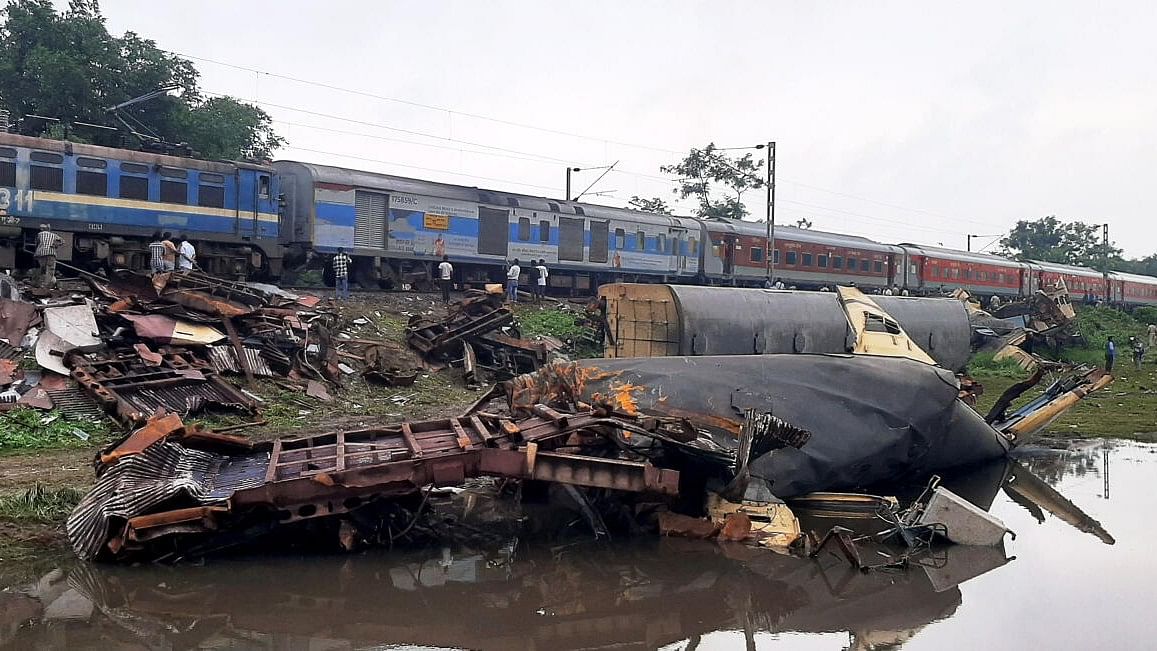
Wreckage of trains near the accident site a day after the collision between the Kanchanjunga Express and a goods train, near Rangapani railway station.
Credit: PTI File Photo
On June 17, a goods train in high speed rammed into the Kanchanjunga Express in north Bengal, killing 10 people and injuring 46 others.
A report by The Times of India, now points to a series of errors that may have lead to the deadly crash.
Serving and retired railway officials told TOI that it pointed to a systemic failure in the Katihar Division of the Northeast Frontier Railway where the accident took place.
The article points out that the automatic signal failure occurred between Rangapani and Chatter Hat at around 5:50 am.
According to Frontline, railway rules state that in case of such breakdowns the system of Working changes from Automatic Block System to Absolute Block System when failure is declared as “prolonged”. In this case, no such declaration was made by the divisional operations managers (DOM) for three hours.
The report further said railway rules specify that when automatic signals fail, a train has to stop for a minute or so at each signal, and must travel at less than 10 km per hour between signals. Moreover, trains require a paper authority called T/A 912 as well as a “line clear ticket” to pass the signals.
However, reports suggest that seven trains had passed the Rangapani station before the Kanchanjunga Express. Frontline reports that a paper authority, was issued to all seven trains as well as the Kanchanjunga Express and the goods train that collided with it. Kanchanjunga Express reportedly stopped at every station.
Railway laws further say, in case of signal failures in a particular section there should be only one train on the Up track and one on the Down track.
However, this was not followed. The station master issued the paper authority to the goods train without verifying whether Kanchanjunga Express had reached the next station which is Chatterhat.
Another important aspect, the “line clear ticket”, which is the second part of the permission required to move ahead, was not issued to any of the trains. This implies that this norm was flouted.